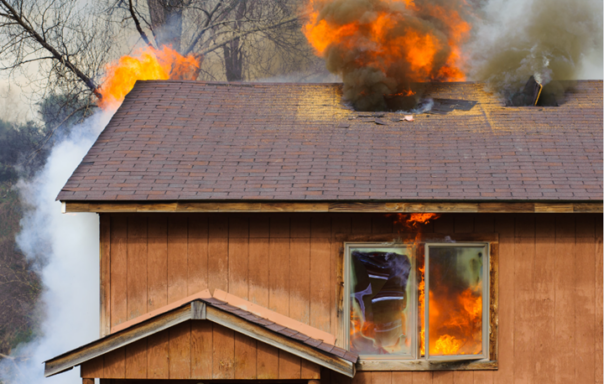Zoning Laws, Lease Agreements, and Fire!

Case Summary: When a woman first moved into her new place, a rental property in Pennsylvania, she was excited for all the extra space that the house provided. Shortly after settling in, her sister-in-law needed a place to stay. Converting the attic into an apartment only seemed natural. Renter appreciated her sister-in-law’s company, and the help with living expenses was an added bonus.
It wasn’t long before one of Renter’s co-workers was also looking for an apartment. Since the basement already had a small kitchen and bathroom, converting the space into a third apartment was simple. Renter was pleased that her new place was almost paying for itself. The arrangements were working well until the new basement tenant left a pot of beans simmering for hours, which caused a fire in the basement.
Renter and the basement tenant evacuated as the fire quickly spread; however, the sister-in-law found herself trapped in the attic apartment. In a desperate attempt to escape the flames, she exited through a second-floor window. The sister-in-law’s resulting injuries required her to be transported via helicopter to the nearest trauma center. Renter and her sister-in-law filed suit against the property owner, whose defense counsel retained DJS to opine on the peculiar living arrangements that had been established without the property owner’s knowledge.
Expert Analysis: To evaluate the property owner’s liability for the sister-in-law’s injuries, the investigation began with a review of the municipality’s zoning map which clearly marks the allowable uses for buildings within defined areas. The subject building was zoned to only allow one- or two-family residences. Further validating this fact, the municipality’s code enforcement officer issued a violation against the property owner following the incident, ordering the elimination of the illegal apartments in the building’s attic and basement.
Fortunately, the lease agreement between Renter and the property owner included details on allowable occupants and specifically prohibited additional people from taking up residence in the building. Although the building code violation was assigned to the property owner, the lease agreement supported testimony that the property owner was unaware that Renter had illegally converted the building into three separate apartments.
The sister-in-law’s counsel alleged the building required an emergency exit. The Commonwealth of Pennsylvania adheres to the International Residential Code (IRC) for one- and two-family structures. When a building houses more than two families or also contains businesses, the International Building Code (IBC) is used to determine building compliance. Per the IBC, the three separate apartments each require a separate emergency exit if the building is not fitted with automatic sprinklers.
The sister-in-law’s counsel had not realized that the building was completely compliant with the IRC, which was the applicable code for the subject property according to the municipality’s zoning map and laws. The non-compliance was directly created by Renter’s actions in illegally establishing separate apartments to accommodate additional tenants.
Conclusion: Meticulous review of the building code requirements, zoning laws, and the lease agreement established that the property owner had no notice or responsibility to modify the structure to accommodate the illegal apartments.
Timothy Sass, P.E., MSCE
Civil and Structural Design Expert
View all articles by Timothy Sass, P.E., MSCE

